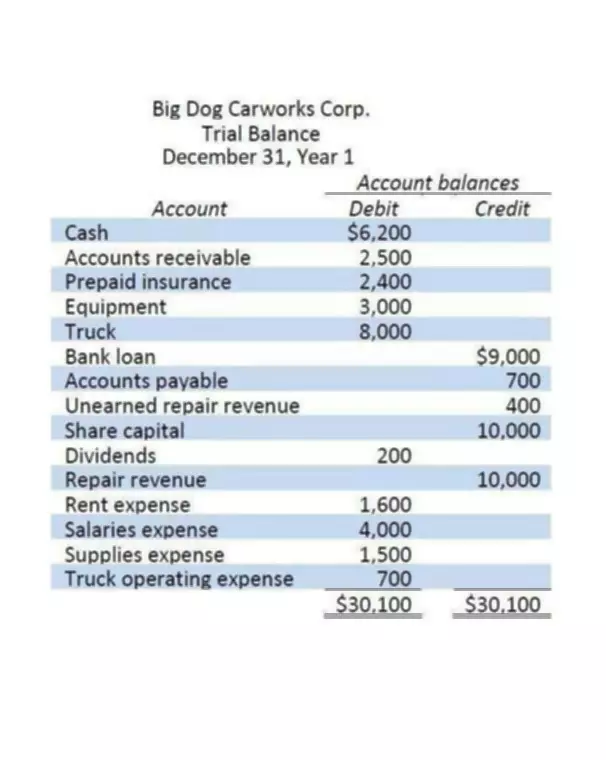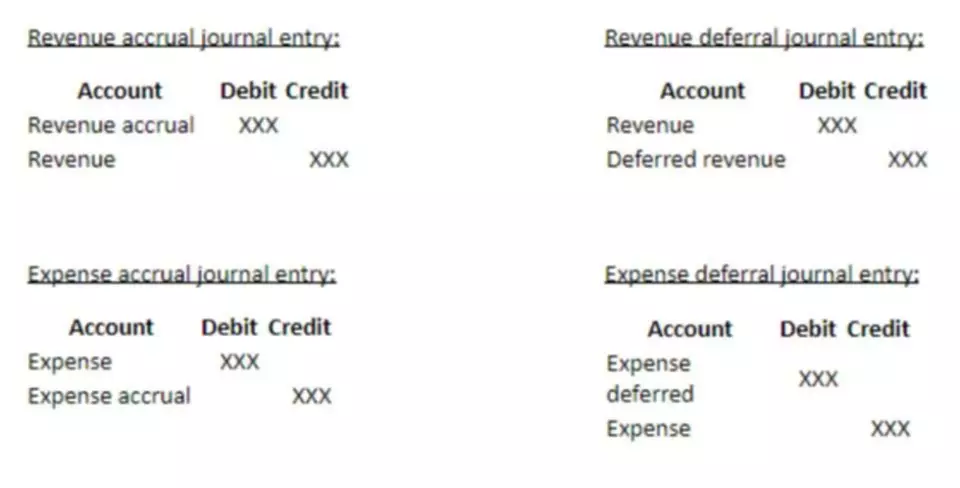Content
Four vendors — Infor, Microsoft, Oracle and SAP — are the market leaders in sales, according to most research firms, and have the broadest product lines covering all of the ERP categories described above. They also have the largest installed base of old on-premises systems, which the industry refers to as legacy ERP. Some ERP systems have features that are needed in specific industries, such as oil and gas, automotive manufacturing, food and beverage, retail and utilities. Often, the ERP vendor partners with a software developer with expertise in a specific industry to create add-ons for a general-purpose ERP system. Some vendors of entry-level ERP sell to both small and midmarket (also called medium-sized) businesses — often lumped together as SMBs — and claim their products can “scale” to accommodate growth. The centralized database provides what’s known in IT as a “single source of truth” ensuring that every module has accurate, up-to-date information (see Figure 1).
- Reporting to the program’s executive team should be a business project manager and an IT project manager.
- The benefit of this type of system is that it’s typically more affordable since providers can spread the cost of hardware and maintenance across all of their customers.
- For companies that want a mixture of both to meet their business requirements, there is the hybrid cloud ERP model.
- Enterprise resource planning (ERP) is a method of efficiently utilizing people, hardware and software to increase productivity and profit, thus simplifying a company’s business processes.
- AI technology is built directly into the ERP systems from which you can learn and then assist them in automating routine processes and building enhanced user experience.
Fiscal Year – The year as defined by the company for financial reporting and tax purposes. Financial Statements – A record of the financial activities and position of an organization. Evaluation – The organization’s overall process to find the right ERP solution. Bill of Material (BOM) – The raw materials that are used to build a finished good or subassembly. Available-to-Promise (ATP) – The date product will be available to ship based on material and capacity availability.
Inventory Management
The ERP software system shown here illustrates enterprise resource planning use cases for sourcing and procurement, as well as sales. Typical ERP modules also address finance, manufacturing, and supply chain, among other applications. ERP stands for Enterprise Resource Planning, and it’s a type of software used to help manage operations within a business. Rather than relying on a patchwork of different systems and tools, ERP allows businesses to keep track of their finances, customer relationships, inventory levels, and more in one easy-to-use system. This ensures that everyone in the company is working with accurate data and can make informed decisions quickly. In this article, we will take a closer look at what ERP is and how it can benefit your business.
An ERP system – also called an ERP suite – is made up of integrated modules or business applications that talk to each other and share common a database. Additionally, since cloud ERP systems are updated automatically by the provider, businesses don’t have to worry about the cost of upgrading their software – another significant advantage over on-premise ERP. With cloud ERP, those costs are shifted to the provider – meaning that businesses can save money on upfront hardware costs and IT staff salaries.
Solutions
Sensitize your organization about the possible system downtimes and other snags that may occur once the implementation begins. First up, you’re going to need a team of highly efficient go-getters who will stop at nothing to implement the system within the stipulated time. Once you’ve rounded up your https://www.bookstime.com/ best, you must empower them with the necessary tools and resources to make their jobs simpler. In case of an update or major issue, the organization needs to wait for the vendor’s team to arrive at their facility and make the system start functioning again, which derails their day-to-day activities.
A CRM helps simplify all client-facing interactions, and the ERP ensures that your operations run smoothly. Manufacturers and industry owners are looking for innovative technologies and AI to give them a competitive edge. Machine learning, as well as intelligent manufacturing, are assisting manufacturers in enhancing overall business efficiency. Understanding this scenario through an example is regarding quality checks and maintenance. The end goal of deploying any software across an organization is to improve its efficiency.
Choosing between cloud ERP solutions
Usually organized into modules, ERP is particularly useful in large enterprises with complex, cross-functional business processes. It is a cloud-based ERP solution specially designed for small to mid-level retailers, manufacturers, wholesalers, and e-commerce operators. Dear Systems is a complete solution covering different modules like purchasing, e-commerce, manufacturing, accounting, inventory management, and sales.
- ERP software has enhanced security features that entirely eradicate all the risk of getting the business information into the wrong hands.
- Human resources—Manages the end-to-end lifecycle of employee events, from recruiting to retirement, as well as employee-related costs, including payroll, benefits, training, and retention programs.
- Detailed material requirements planning uses bill of material and inventory information to develop a complete manufacturing and purchasing plan for all products, assemblies, components and materials.
- This knowledge is then readily available to every appropriate employee on their mobile devices, including smartphones and tablets.
- An ERP system is a business process management software that integrates daily business activities.
- Other prominent vendors include Epicor, IFS, DELMIAworks (formerly IQMS), Plex Systems, QAD, Syspro and Unit4.
- That way, you have folks building something specifically for you and the unique
challenges you face.
Modular, cloud-based enterprise ERP systems are also a popular choice for midmarket companies with complex processes or plans for rapid growth. Enterprise resource planning systems include a variety of different modules. Each ERP module supports specific business processes – like finance, procurement, or manufacturing – and provides employees in that department with the transactions and insight they need do their jobs. Every module connects to the ERP system, which delivers a single source of truth and accurate, shared data across departments.
ERP Cost for Small Businesses
Jack is the President of Visual South and has been working with ERP since 1996 when he bought it in his role as a Plant Manager. Since 1998 he has worked for Visual South with roles in consulting, sales and executive management. Work Order Cost – The value of material, labor, outsourcing, and burden that went into the production of the work order.

Businesses employ enterprise resource planning (ERP) for various reasons, such as expanding, reducing costs, and improving operations. The benefits sought and realized between companies may differ; however, some are worth noting. ERP has evolved over the years from traditional software models that made use of physical client servers and manual entry systems to cloud-based software with remote, web-based access.
Because of the mobile platforms and decentralized workforce–work anywhere and anytime–ERP systems can no longer be tied to yesterday’s on-premises back-office applications. The next-generation, cloud-based, and modern ERP solutions support the new industry dynamics while providing the ability to reduce support time to enable organizations to respond quickly to volatile markets and industry trends. erp defined ERP systems will also provide transparency into your complete business process by tracking all aspects of production, logistics, and financials. These integrated systems act as a business’s central hub for end-to-end workflow and data, allowing a variety of departments to access. Generally there are three deployment options for ERP systems; Cloud-based, on-premise, and a hybrid of the two.

While implementing ERP, it’s always a good idea to have someone on the team who knows what they’re doing. If nobody from the team has been a part of an ERP implementation team previously, you can always hire external consultants who can guide you through the entire process. ERP systems cost a fortune, and thus, the businesses that deal in high volumes with decent bottom lines may prefer going with the ERP first.
Common ERP modules
This will allow your company to improve things like your warehouse management process flow. An ERP can cover a variety of functions in a business and how you use an ERP system depends on the variety of systems that you need to connect and what departments are involved. Detailed material requirements planning uses bill of material and inventory information to develop a complete manufacturing and purchasing plan for all products, assemblies, components and materials. The solution gives a complete set of apps to remove expensive integrations and smoothen all types of business processes.
- Having all this information, users can make complete surety on the data and analytics, like whether they are safe to use or not, avoiding all the risk of any errors.
- Upon successfully implementing an ERP software, a support team should be set up that helps the employees in case they find themselves getting stuck while operating it.
- See how industry analysts compare Oracle Cloud ERP against other financial management software providers.
- Without ERP, companies tend to operate in silos, with each department using its own disconnected system.
- That is why ERP systems try to standardise operational processes and achieve this through specialised modules.
- Essentially, ERP systems offer a digitized, 360-degree view of your business.
Yet today’s ERP systems are anything but basic and have little resemblance to the ERP of decades ago. They are now delivered via the cloud and use the latest technologies – such as artificial intelligence (AI) and machine learning – to provide intelligent automation, greater efficiency, and instant insight across the business. Modern cloud ERP software also connects internal operations with business partners and networks around the world, giving companies the collaboration, agility, and speed they need to be competitive today.
Benefits of ERP Integration
If you work with consumer goods importers, EDI and direct-to-consumer (DTC) shipping functionality are absolutely necessary. Customer relationship management—While CRM is a standalone software category, many ERP systems include CRM as a module. Human resources—Manages the end-to-end lifecycle of employee events, from recruiting to retirement, as well as employee-related costs, including payroll, benefits, training, and retention programs. The “R” in ERP refers to the critical resources, notably materials, people, equipment, energy, and cash, to accomplish the work that needs to be done. These resources are tracked against commitments, such as orders or accounts payable, in order to make sure supply and demand will be accommodated with minimal waste and cost.
What are the 3 characteristics of an ERP?
- Enterprise-wide integration. Business processes are integrated end to end across departments and business units.
- Real-time (or near real-time) operations.
- A common database.
- Consistent look and feel.